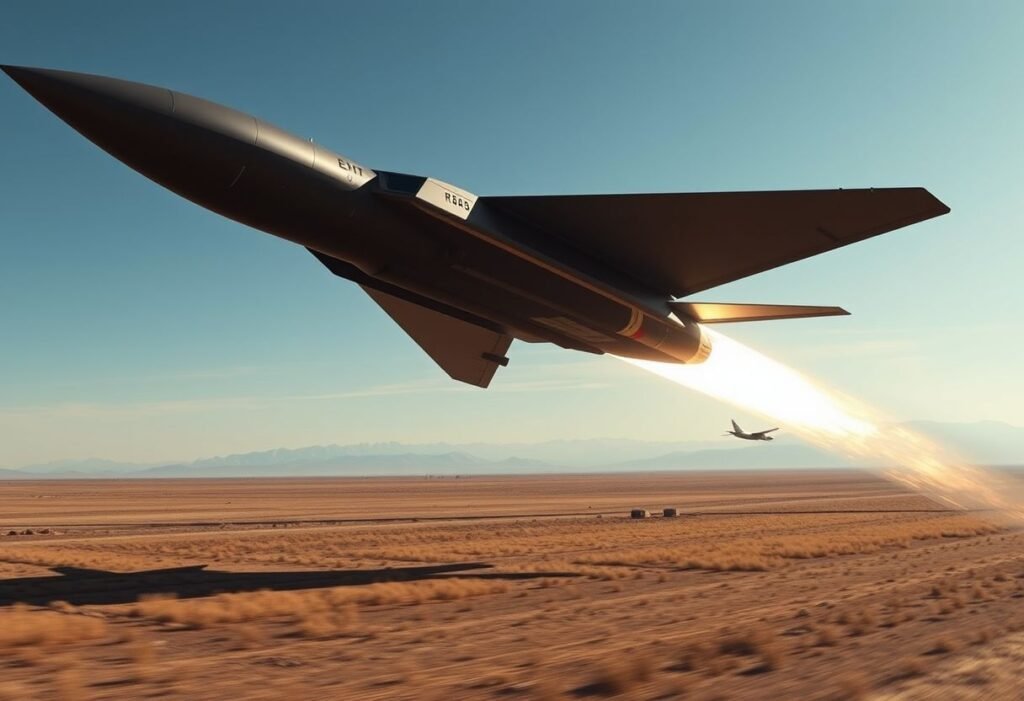The United States Army is advancing its military capabilities by testing the ‘Dark Eagle’ hypersonic missile, a cutting-edge weapon that significantly enhances strategic options. With hypersonic technology becoming increasingly vital in modern warfare, the deployment of this missile represents a key innovation for the Army and its allies.
US Army’s Strategic Advancements in Hypersonic Technology
The pursuit of hypersonic Missiles by the US Army underscores a transformative shift in military strategy. In recent months, the Army has been eager to integrate advanced weaponry, particularly the Long-Range Hypersonic Weapon Battery, into its operational framework. During Exercise Resolute Hunter 24-2, conducted at Naval Air Station Fallon in Nevada, the Army engaged with allied forces from the Five Eyes alliance to improve coordination and readiness in utilizing hypersonic capabilities. This exercise exemplifies not only the Army’s commitment to strategic advancements but also the importance of multilateral cooperation in modern defense strategies.
Defining Hypersonic Weapons and Their Significance
Hypersonic weapons are defined as projectiles that travel at speeds of Mach 5 or higher, more than five times the speed of sound. This exceptional velocity allows these weapons to evade conventional defenses, making them a formidable option on the battlefield. The introduction of the Dark Eagle missile system enhances the US Army’s rapid strike capability, which can potentially turn the tide in engagements with adversaries who are ill-prepared to counteract such high-velocity threats. As nations vie for technological superiority, hypersonic weaponry has emerged as a critical element of national security.
Operational Testing and Field Exercises
Recent operational testing of the Dark Eagle missile in real-world scenarios aims to validate performance metrics essential for its deployment. Field exercises like Resolute Hunter provide invaluable data, including trajectory assessments and the operational effectiveness of hypersonic missiles against various targets. These evaluations also allow military personnel to simulate tactical responses under pressure, enhancing their readiness to engage in complex operational environments. The insights gained from these exercises are crucial in refining tactics and enhancing overall mission success rates.
The Future of Hypersonic Missiles in Defense Strategy
The increasing focus on hypersonic technology indicates its potential role within the larger context of the US military’s future strategies. As other nations also invest in developing hypersonic missile systems, the US Army must continuously innovate to maintain a strategic advantage. The integration of technologies such as advanced materials and precision guidance systems will further enhance the missile’s effectiveness and operational flexibility. Hence, the future landscape of warfare may heavily rely on the efficacy of hypersonic weaponry, ultimately shifting defense paradigms.
Civilian Applications of Hypersonic Technology
While hypersonic weapons are predominantly associated with military applications, the underlying technologies can also be beneficial for civilian purposes. These advancements in speed and aerodynamics hold promise for aviation and aerospace industries, where hypersonic transport can potentially lead to significant reductions in travel time. Moreover, collaborative efforts between defense contractors and civilian sectors can promote shared innovations, enhancing the technology’s applicability in commercial scenarios. Thus, hypersonic technology may go beyond military use, impacting the broader technological landscape.
Conclusion and Future Implications
The successful testing of the Dark Eagle hypersonic missile marks a significant milestone in the US Army’s modernization efforts. As the military prepares for future conflicts that may require rapid response capabilities, the integration of hypersonic weapons into its arsenal will immensely improve operational efficiency. The implications of such advancements extend beyond military applications, potentially reshaping the entire field of aerospace technology. The evolution of hypersonic weapons will undoubtedly play a critical role in shaping both national and global security dynamics in the years to come.
Disclaimer: The contents of this article are for informational purposes only and do not constitute military guidance or strategy.





















